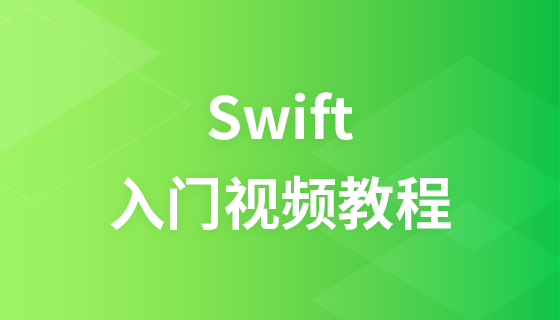JavaScript function calls
JavaScript functions have 4 ways to call.
The difference between each method lies in the initialization of this.
this Keyword
Generally speaking, in Javascript, this points to the current object when the function is executed.
Note: this is a reserved keyword, you cannot modify the value of this.
Calling JavaScript functions
In the previous chapters we have learned how to create functions.
The code in the function is executed after the function is called.
Call as a function
<!DOCTYPE html>
<html>
<head>
<meta charset="utf-8">
<title>php中文网(php.cn)</title>
</head>
<body>
<p>
全局函数 (myFunction) 返回参数参数相乘的结果:
</p>
<p id="demo"></p>
<script>
function myFunction(a, b) {
return a * b;
}
document.getElementById("demo").innerHTML = myFunction(10, 2);
</script>
</body>
</html>Run the program and try it
The above function does not belong to any object. But in JavaScript it is always the default global object.
The default global object in HTML is the HTML page itself, so the function belongs to the HTML page.
The page object in the browser is the browser window (window object). The above functions will automatically become functions of the window object.
myFunction() and window.myFunction() are the same:
Example
<!DOCTYPE html>
<html>
<head>
<meta charset="utf-8">
<title>php中文网(php.cn)</title>
</head>
<body>
<p>全局函数 myFunction() 会自动成为 window 对象的方法。</p>
<p>myFunction() 类似于 window.myFunction()。</p>
<p id="demo"></p>
<script>
function myFunction(a, b) {
return a * b;
}
document.getElementById("demo").innerHTML = window.myFunction(10, 2);
</script>
</body>
</html>Run the program to try it
Tips: This is a common method for calling JavaScript functions, but it is not a good programming practice. Global variables, methods or functions can easily cause naming conflict bugs.
Global object
When the function is not called by its own object, the value of this will become the global object.
In web browsers, the global object is the browser window (window object).
The value of this returned by this instance is the window object:
Instance
<!DOCTYPE html>
<html>
<head>
<meta charset="utf-8">
<title>php中文网(php.cn)</title>
</head>
<body>
<p>在 HTML 中 <b>this</b> 的值, 在全局函数是一个 window 对象。</p>
<p id="demo"></p>
<script>
function myFunction() {
return this;
}
document.getElementById("demo").innerHTML = myFunction();
</script>
</body>
</html>Run the program and try it
Note: When a function is called as a global object, the value of this will become a global object. Using the window object as a variable can easily cause the program to crash.
Function as method call
In JavaScript you can define functions as methods of objects.
The following example creates an object (myObject), which has two properties (firstName and lastName), and one method (fullName):
<!DOCTYPE html>
<html>
<head>
<meta charset="utf-8">
<title>php中文网(php.cn)</title>
</head>
<body>
<p>myObject.fullName() 返回 John Doe:</p>
<p id="demo"></p>
<script>
var myObject = {
firstName:"John",
lastName: "Doe",
fullName: function() {
return this.firstName + " " + this.lastName;
}
}
document.getElementById("demo").innerHTML = myObject.fullName();
</script>
</body>
</html>Run the program and try it
## The #fullName method is a function. Functions belong to objects. myObject is the owner of the function.
<!DOCTYPE html>
<html>
<head>
<meta charset="utf-8">
<title>php中文网(php.cn)</title>
</head>
<body>
<p>在一个对象方法中 ,<b>this</b> 的值是对象本身。</p>
<p id="demo"></p>
<script>
var myObject = {
firstName:"John",
lastName: "Doe",
fullName: function() {
return this;
}
}
document.getElementById("demo").innerHTML = myObject.fullName();
</script>
</body>
</html>Run the program and try itTips: When the function is called as an object method, the value of this will become the object itself.
Use the constructor to call the function
If the new keyword is used before the function call, the constructor is called. This looks like a new function is created, but in fact JavaScript functions are recreated objects:Instance
<!DOCTYPE html>
<html>
<head>
<meta charset="utf-8">
<title>php中文网(php.cn)</title>
</head>
<body>
<p>该实例中, myFunction 是函数构造函数:</p>
<p id="demo"></p>
<script>
function myFunction(arg1, arg2) {
this.firstName = arg1;
this.lastName = arg2;
}
var x = new myFunction("John","Doe")
document.getElementById("demo").innerHTML = x.firstName;
</script>
</body>
</html>Run the program and try itThe call to the constructor will create a new object. The new object inherits the constructor's properties and methods.
Tip: The this keyword in the constructor does not have any value. The value of this is created when the object (new object) is instantiated when the function is called.
Calling a function as a function method
In JavaScript, functions are objects. A JavaScript function has its properties and methods. call() and apply() are predefined function methods. Two methods can be used to call functions, and the first parameter of both methods must be the object itself.function myFunction(a, b) {return a * b;
}
myFunction.call(myObject, 10, 2); // Return 20
function myFunction(a, b) {return a * b;
}
myArray = [10,2];
myFunction.apply(myObject, myArray ); // Return 20
Both methods use the object itself as the first parameter. The difference between the two lies in the second parameter: apply passes in a parameter array, that is, multiple parameters are combined into an array and passed in, while call is passed in as the parameter of call (starting from the second parameter).
In JavaScript strict mode (strict mode), the first parameter will become the value of this when calling the function, even if the parameter is not an object.
In JavaScript non-strict mode (non-strict mode), if the value of the first parameter is null or undefined, it will use the global object instead.
Tip: Through the call() or apply() method you can set the value of this and call it as a new method of an existing object.














